Weaving Culture and Healthcare
Mission Statement | Background | Contemporary Issues | Cultural Sensitivities | Bibliography | About Us
Home > Cultural Sensitivities > Weaving Culture and Healthcare
Weaving Culture and Healthcare
Providers who grew up in the same culture as the people they are helping can make a huge difference to individuals and to communities. Physicians from the community have greater insight into community needs because they are familiar with the patient’s mindframe and context.
Community discussions about health are important and should be encouraged in a way that fits community expression. For instance, health discussions may be framed as part of a traditional story or narrative that is passed down through generations. Utilizing traditional teaching techniques to communicate health issues will allow people to connect with each other and connect with medicine.
This is especially true when dealing with difficult matters. One Ojibwe Physician discussed the subject of ‘dark matters’. Vainio states “there is dark stuff that people don’t talk about. “It is difficult to bring up these conversations. These are scary conversations, but it is important…. When you have those kinds of demons, you either hide them in the closet, so they haunt your dreams, or you open the doors and you let the sunlight get them. That is what I have chosen to do.”(Arne Vainio)
Keys to a Good Professional Relationship with American Indian Patients
Make the patient welcome. First meetings are important! To make the patient feel welcome, extend a warm greeting and smile. The smile may not be returned, but it will be appreciated. Introduce yourself, and allow the patient to do the same. Thank the patient for having chosen your health facility. Although a western-style handshake is appropriate and appreciated, don't be surprised if it is returned by an unusually weak or strong one.
1. Use eye contact judiciously. Although eye contact is expected during the initial handshake and occasionally during the interview, prolonged eye contact is considered a sign of disrespect and should be avoided.
2. Take your time. It is important to spend time with the patient and to avoid appearing hurried or nervous. Patients often travel great distances at great financial hardship to see a physician; if the physician spends only five or ten minutes with them, the message is clear and negative.
3. Speak plainly. During an examination, avoid medical or other terms that may not be understood, but at the same time, don't talk down to the patient or appear to treat him or her as a child. A soft, concerned voice will do much to make the patient feel at ease.
4. Respect silence. Be concise and give the patient time to reflect on what you are saying. Don't try to fill up the time. American Indians are taught the value of silence and may also need time process.
5. Understand tribal diagnosis. Because traditional and scientific medicine are not mutually exclusive, the patient may have come to you following diagnosis by a tribal diagnostician. Because tribal diagnosticians use different procedures, the patient may be unfamiliar with the technique of identifying the specific location of pain. Rather than asking "Where is the pain?", ask the patient to point to the most intense area of pain.
6. Accommodate tribal healing. Patients may wish to perform certain tribal healing ceremonies, even in the hospital (e.g., burning sage). Try to accommodate these ceremonies as a means of improving both the patient's and the family's confidence in the care.
7. Show special respect to the elderly. Great respect is given to the elderly. Caregivers gain approval by treating the elderly with kindness and respect and not appearing to criticize or scold them.
8. Think carefully about family care. Poverty, distance from the medical facility, and taboos against dying in the home may make it impractical to release to the family a patient needing long-term or terminal care. Discuss options with the family and try to ascertain their attitudes about caring for the person at home before releasing a person into family care.
9. Involve the extended family. The extended family plays an important role in health care decision making. Often many family members will appear with a patient who is to be admitted for a hospital stay. Try to accommodate them close to the patient's room or at least close to the hospital. Include family members when decisions regarding treatment options are needed. Very often, a patient will postpone surgery because the consent of the family leader, often the eldest female, must be obtained first.
10. Accept a different sense of time. Most American Indian peoples are present-oriented, which is viewed as a continuum with no beginning and no end. This can cause difficulty in organizing future events, such as the regulation of medication. Caregivers should be wary of telling patients to take medications with meals, as the patient may have three meals today, two meals tomorrow, and four meals the day after that. In addition, many Indians are task-conscious rather than time-conscious, paying more attention to finishing a task than to a clock or to an appointment schedule. If possible, ask the patient for help in linking appointments or medication schedules to events that are certain to happen in the patient's life.
11. Give and expect generosity. Indian culture discourages competitive behavior and encourages giving, sharing, and cooperation. Generosity and doing things for others are regarded highly.
References
http://www.ncbi.nlm.nih.gov/books/NBK201295/
http://www.ncbi.nlm.nih.gov/books/NBK248422/


